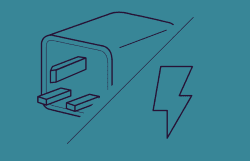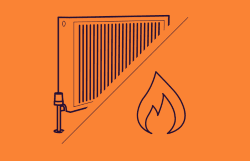Interactive Water Supply Map
Knowing your region and supplier will help you save
The map below shows which water company supplies each area of England and Wales. There are 32 regulated companies in the water and sewerage sectors:
- 10 regional companies provide both water and sewerage services.
- 9 regional companies providing water services only.
- 5 local companies providing either water or sewerage services or both.
- 8 water supply licensees offering water and sewerage services to large use non-household customers who can access competition.
The majority of customers are served by monopoly suppliers for their water and sewerage services. Your bill should tell you which company supplies your water and sewerage services.
You may receive your water supply from one company and your sewerage services from another. This means that you may get two separate bills.
Click on a water company to find its contact details.
Water supply licensees are not tied to specific areas of the country. Find their contact details.

Key
- AFW = Affinity Water
- BRL = Bristol Water
- CHL = Cholderton & District Water
- DVW = Dee Valley Water
- ESK = Essex & Suffolk (part of Northumbrian Water)
- HPL = Hartlepool (part of Anglian Water)
- PRT = Portsmouth Water
- SBW = Sembcorp Bournemouth Water
- SES = Sutton & East Surrey Water
- SEW = South East Water
- SSC = South Staffs Water
Local water companies’ contact details
There are a number of other companies who provide regulated water and sewerage services whose areas are too small to show on this map. They are:
Albion Water Ltd
Head Office Address:
Harpenden Hall
Southdown Road
Harpenden
Herts
AL5 1TE
Phone: +44(0)1582 767720
http://www.albionwater.co.uk/
Independent Water Networks Ltd
Head Office Address:
Driscoll 2
Ellen Street
Cardiff, CF10 4BP
Phone: +44 (0)845 055 6196
http://www.iwnl.co.uk/
SSE Water Ltd
Head Office Address:
55 Vastern Road
Reading RG1 8BU
Phone: +44 (0)118 958 0100
Fax: +44 (0)118 953 4028
www.southern-electric.co.uk/youraccount/water/
www.swalec.co.uk/youraccount/water/
Peel Water Networks
Peel Dome
The Trafford Centre
M17 8PL
Phone: 0161 629 8200
Fax: 0161 629 8332
http://www.peel.co.uk/pwnl/
Veolia Water Projects
Kings Place
90 York Way
Fifth Floor
London
N1 9AG
General enquiries: 0207 843 8500
Fax: 0207 843 8560
http://www.veoliawater.co.uk/
Where does my water supply come from?
Knowing where your water supply comes from in the UK can be easily achieved through an interactive and innovative approach, thanks to the advancements in technology and the availability of resources like water maps and online platforms. Understanding the source and management of water is crucial for sustainable development and ensuring access to clean water for all.
One effective method to discover your water supply is by using a world water map. These interactive maps provide detailed information about water supplies, including sources, locations, and network details. By accessing such maps, you can explore various areas and view the water sources that serve your region.
In the UK, water companies play a significant role in providing this essential service. They hold records of water mains, sources, and supply areas. By requesting information from your water company, you can gain a detailed view of your water supply and the associated data, like water quality and climate considerations.
Moreover, many water companies have developed user-friendly websites with interactive maps that allow customers to search for relevant information about their water supply. These sites provide comprehensive content and services, including reporting issues, accessing account details, and exploring additional details about the supply network.
For a more comprehensive understanding, you can also register on these platforms and follow specific projects or developments related to your water supply. By doing so, you gain access to private and additional information, ensuring you stay updated about any happenings or construction activities that may affect your water supply.
The UK government has statutory responsibilities regarding water management, and it collaborates with water companies to maintain a sustainable water supply. They carefully manage water resources, taking into account factors like drought conditions and river access.
In conclusion, wi
What are the 5 sources of water?
In the UK, the five main sources of water are derived from a complex network of natural and managed resources. Understanding these sources is essential for sustainable water management and ensuring a sufficient supply for communities across the country.
- Surface Water: Surface water is one of the primary sources of water in the UK. It includes water bodies like rivers, lakes, and reservoirs. These water sources are often mapped on world water maps and interactive maps, allowing people to view and explore their locations. Water companies manage and extract water from these areas to supply it to various regions.
- Groundwater: Groundwater refers to water stored beneath the Earth’s surface in aquifers. It plays a vital role in maintaining water supply during dry periods, such as droughts. Water companies carefully manage groundwater sources and provide detailed information about their locations and conditions, helping communities to better understand and manage this resource.
- Rainwater: Rainwater is a natural source of water that can be collected and used for various purposes. Although not a primary water supply, it is becoming more popular for sustainable development. Interactive maps and online platforms enable people to explore rainwater harvesting options and access information on its benefits.
- Desalination: In some coastal areas, desalination plants are used to convert seawater into potable water. While not a widespread practice in the UK, these innovative facilities are essential for specific regions to meet their water demands. Information about desalination plants can be found through water companies’ records and government resources.
- Recycled Water: Recycled water, also known as reclaimed or wastewater, is treated and reused for non-potable purposes like irrigation, industrial processes, and toilet flushing. Water companies manage the distribution of recycled water and hold records on the processes and locations involved.
How do you find out where water pipes are?
To find out where water pipes are located, several methods and resources are available, leveraging technology and interactive tools for efficient exploration and management. Water companies, interactive maps, and online platforms play a crucial role in providing access to the necessary information.
One of the most innovative and convenient ways to discover water pipes’ locations is through interactive maps. World water maps and interactive maps provided by water companies allow users to view the entire water supply network. By exploring these maps, individuals can identify the supply areas, water mains, and even the source of the water.
Water companies are an invaluable resource for obtaining detailed information about the water supply infrastructure. They hold records of water mains, map layers, and other essential data. If you need to know specific details or request access to certain information, contacting the water company directly can yield accurate and precise results.
For construction or renovation projects, it is essential to locate water pipes accurately. Specialized services like Digdat, which allow users to access private records and information, help ensure that digging or construction work can be carried out safely and without causing damage to the water supply network.
Additionally, communities facing drought or water-related issues can explore online platforms for detailed data and reports on water supplies. These platforms often provide real-time updates, ensuring a greater understanding of the current water conditions.
When dealing with water pipes, it’s essential to manage and maintain them properly. Regular inspection and condition assessment of the pipes can be carried out by trained personnel, ensuring a sustainable and reliable water supply.



